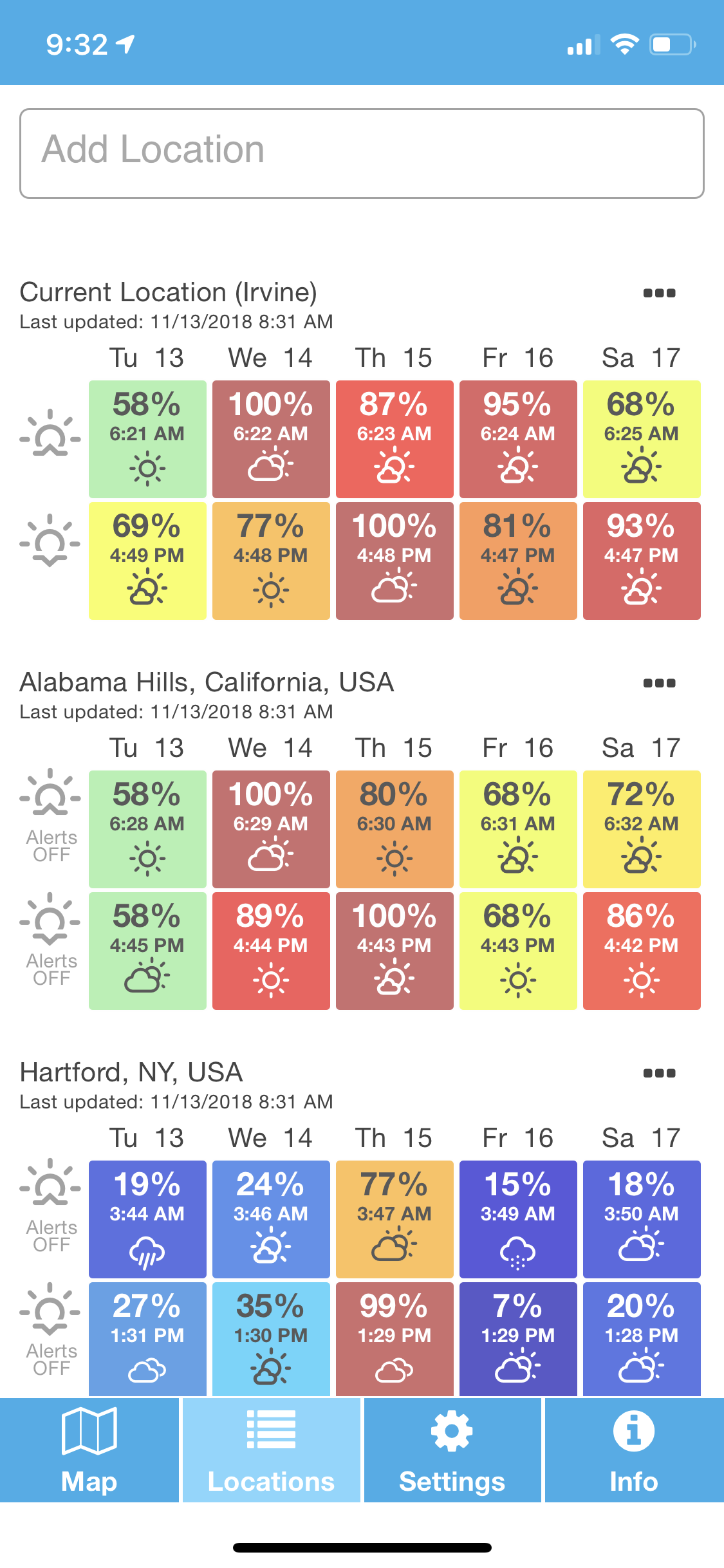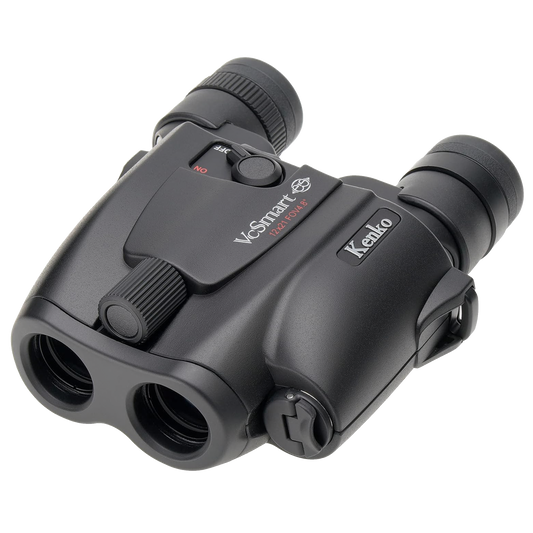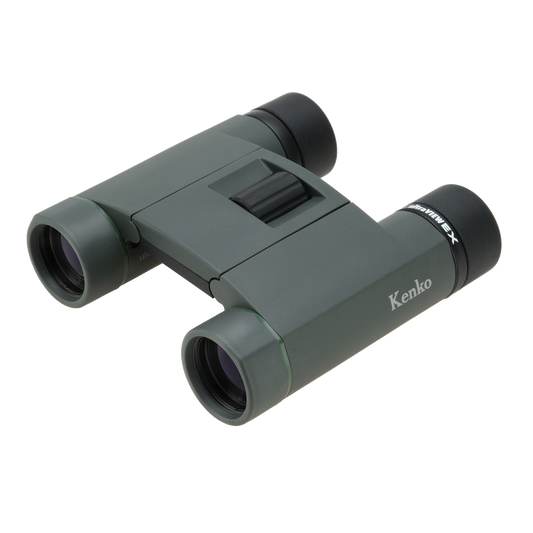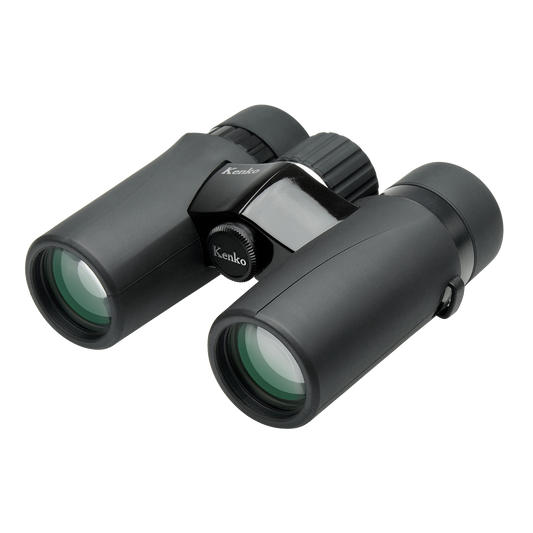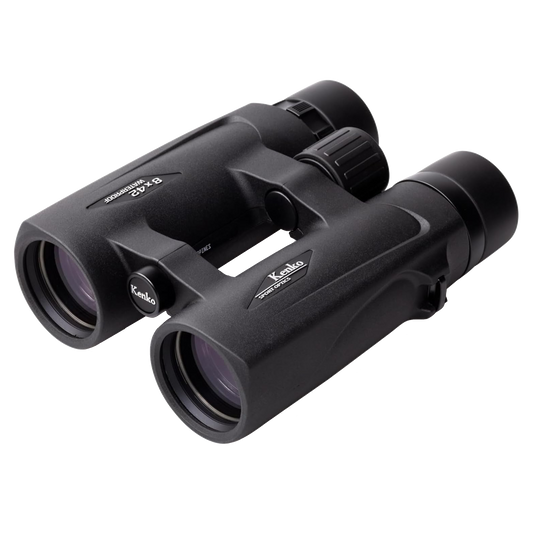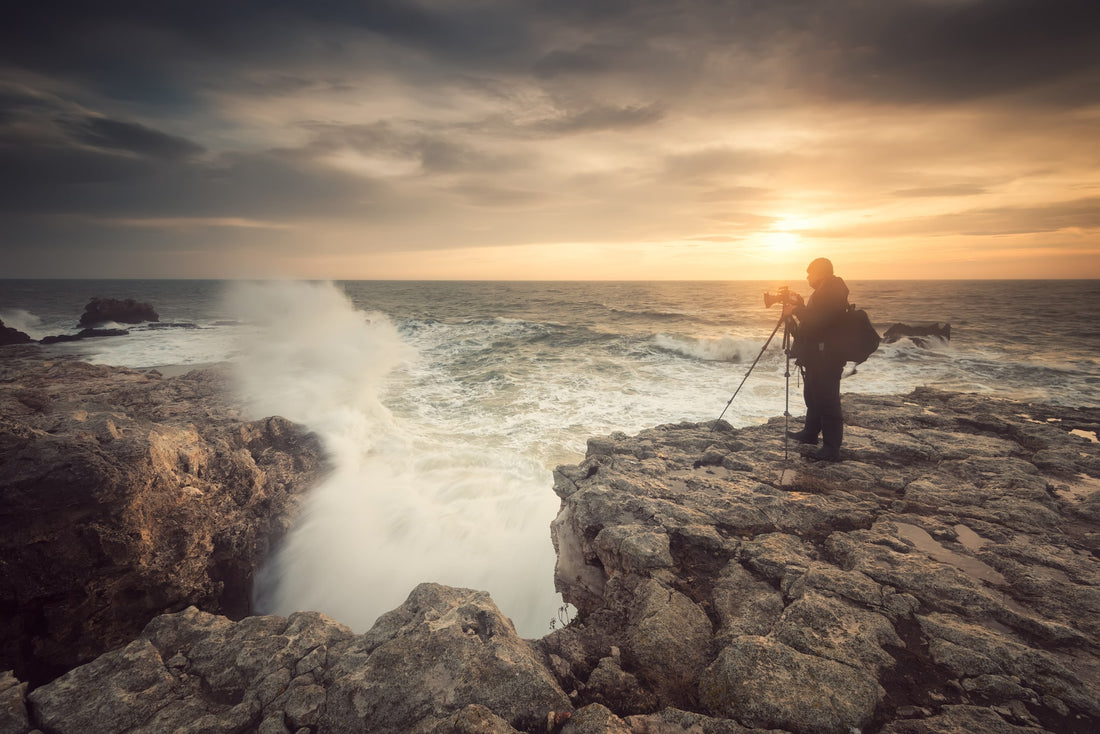
Must-Have Gear for the Serious Landscape Photographer
 Photo by jk78 via iStock
Photo by jk78 via iStock
I think we all know that ultimately, capturing beautiful landscape photos is less about the gear and more about your creative eye and your skills as a photographer.
But having the proper gear certainly doesn't hurt...
There is an ocean of landscape photography gear out there, some good, some bad, and some in between.
Below, I've outlined some of my personal favorite stuff, from camera bags to harnesses, rain covers to filters, and a few things in between.
This is all gear that I've used in the field and found to be of value to me. I hope you find the same!
Best Camera Backpack for Hiking: f-stop Sukha
If you're going off the beaten path to photograph landscapes, you need a big backpack to carry all your gear.
And for that job, I've yet to find a better solution than the f-stop Sukha waterproof camera backpack.
This bag holds a whopping 70 liters of gear, so it's not something you'll need for a quick day trip.
But for those days-long treks, this bag is a perfect companion.
As mentioned above, this is a waterproof camera backpack, so even if you're in the Pacific Northwest getting dumped on with rain, your gear will remain dry.

Even better, f-stop has developed ingenious Internal Camera Units (ICU) that keep your gear neat, tidy, and organized inside the bag.
The ICU is heavily padded as well, so your gear will stay safe, even if your bag takes a few lumps along the way.
There's more storage on the exterior of the bag, which comes with expandable side zipper pockets, reinforced carry straps for lashing your tripod to the side of the bag, and loop and shock cord accessory attachment points.
It's comfortable to carry to boot! The internal aluminum frame, enhanced EVA-padded Jersey laminate shoulder straps and hip belt, and Jersey laminate padded back make sure of that.
That's true even when I've got this thing filled to the brim with cameras, lenses, time-lapse gear, and so forth.
Learn more about the f-stop Sukha Camera Backpack
Best Landscape Photography Tripod: ProMediaGear TR424L
I've been using the ProMediaGear TR424L tripod for months and months now, and it's proven to be far and away the best tripod I've ever had. In fact, I named it one of the best tripods of 2018.
To be fair, at 6.4 pounds and 26.3-inches when folded, this isn't a tripod you'll likely be toting with you into the backcountry. But for roadside shots and short hikes, this thing is always with me.
It can hold up to 125 pounds of gear, which is likely far more than you or I will ever need for typical landscape photography work.
The legs are 4-section carbon fiber legs with a 42mm diameter, 3-position angle locks, and quarter-turn twist locks for quick deployment when time is of the essence.
Aiding in stability are rubber feet and stow-away metal spikes that can be used when the terrain is especially iffy.

Up top, there's an aluminum alloy head with safety lock, a tripod plate with a 3/8"-16 mount, and a bubble level. There are also eleven 1/4"-20 female accessory threads, so you can load this thing up with whatever accessories you want.
The tripod can extend from a minimum height of 6.7-inches (which is great for low-angle shots of foreground interest) up to a maximum of 77-inches.
No matter where you are in that height range, this tripod is ultimately sturdy and will keep your gear stable, even if you're using a big camera and lens.
In other words, this is a rock-solid tripod no matter what type of landscape you're photographing!
Learn more about the ProMediaGear TR242L Tripod
Best Photo Editor for Landscape Photography: Luminar 3
I jumped on the Luminar bandwagon last year with Luminar 2018. Now that Luminar 3 is out, I'm happier than ever that it's my editor of choice.
While Luminar 2018 was great, it lacked a library feature. Luminar 3 changes all that with a library functionality that puts your images front and center for quickly organizing, rating, sorting, and browsing your photos.
You can add existing images in folders from various locations, including synced cloud storage and external hard drives. You can import photos from memory cards or hard drives to copy or move images into your library as well.

What's more, images can preserve existing organization or easily be groups by year, month, and day.
You can use albums and favorites to organize your photos, quickly find photos across multiple locations, folders, and drives, and you can also sync edits from one photo to another in the group.
Perhaps best of all, any changes made in the Luminar Library or the desktop stay in perfect sync, that way your library is perfectly organized both inside Luminar and on your drives.
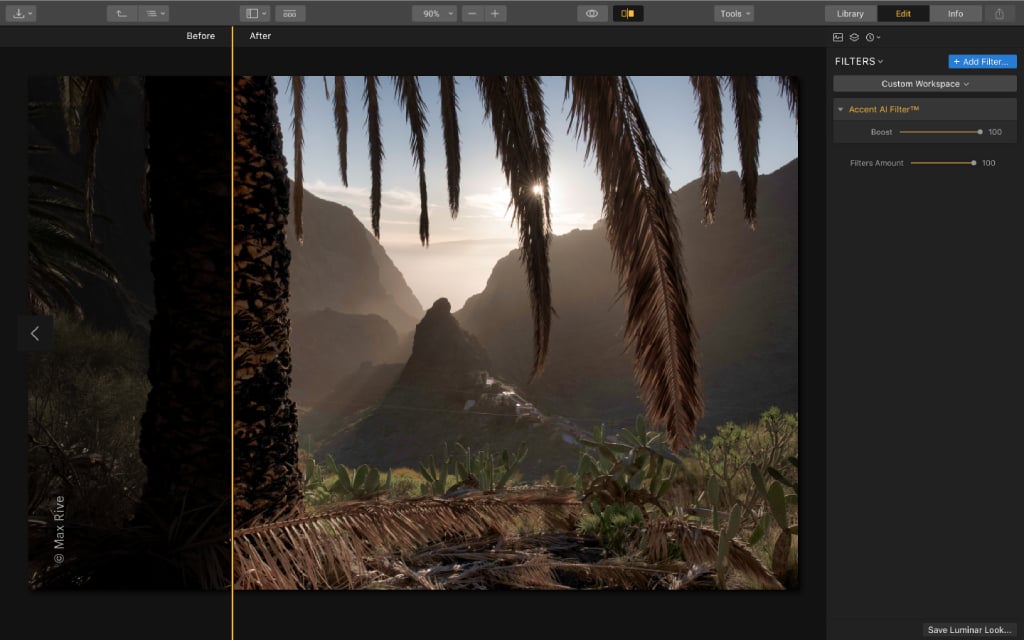
As if that's not good enough, Luminar makes editing landscape photos a veritable breeze.
With artificial intelligence-powered tools, you can make quick work of enhancing your images.
The Accent AI Filter (shown above) is a particular favorite of mine because it applies about a dozen different changes including color, tone, detail, and depth to your photo automatically. That's a huge time-saver!
You aren't left without input, though...
You can quickly adjust the amount of the AI Accent Filter by manipulating a slider (as shown above). That means you still retain complete control over how the image looks, but without having to manipulate a bunch of different controls.
Using Luminar has totally changed my landscape photography editing workflow, and it can do the same for you.
Check out the video above by David Johnston to see Luminar in action!
Best Tripod Ball Head for Landscape Photography: Acratech GP
I've used the Acratech GP ball head for years, and the one shown above is a new addition to my kit.
This special edition red version looks absolutely incredible, but more important than that, it's built like a tank and offers the same precise, smooth adjustments that I've grown accustomed to from Acratech.
Even when I have my Nikon D850 with an L-bracket and big lens on this ball head, it still provides superb functionality and precision.
And that's precisely what you want in a ball head, not just for landscape photography, but for taking any photos in which fine-tuning the shot with the ultimate in accuracy is of paramount importance.
Learn more about the Acratech GP Ball Head
Best L-Bracket for Landscape Photography: Fusion Photo Gear FPG-1005
If you aren't using an L-bracket for landscape photography, you should be.
What's so great about L-brackets is that they allow you to adjust the composition from landscape to portrait orientation without moving your camera or tripod, and without messing up the composition.
That is, when you frame up a shot in landscape orientation and flip the camera on its side for a portrait-oriented shot, the composition will be different because the camera is now to the left of where it was.
An L-bracket negates that problem, so you spend less time messing around with correcting the composition and more time actually taking photos.

I recently got a Fusion FPG-1005 L-bracket, and I have to say that this thing has blown me away.
For starters, it has a patent-pending Tilting Bracket that allows you to unlock the vertical piece and tilt it away from your camera for improved access to the camera's ports.
Additionally, Fusion has incorporated a deployable attachment loop to the bottom of the bracket (shown below), which flips down to provide an attachment point for a camera strap. That means that you don't have to take the L-bracket off or buy an adapter to be able to carry your camera. And since the deployable attachment loop flips back into the L-bracket, there's nothing in the way of attaching the bracket to your tripod, either.

This thing is absolutely rock-solid, too.
Fusion built a testing machine specifically to test the aforementioned deployable attachment loop, and after 100,000 cycles, there was no hint of damage or deformation whatsoever.
The hinge pin on the deployable attachment loop is rated to a sheer force of 1,100 pounds, so you needn't worry that it will fail any time soon.
With anti-twist pads, an anti-rotation arm, and an interlocking mortise and tenon system that locks the tilting bracket in place, you don't have to worry about your camera moving around, either.
Learn more about the Fusion Photo Gear FPG-1005 L-Bracket
Best Camera Strap for Landscape Photography: Holdfast MoneyMaker Solo
As I note in my detailed Holdfast Gear MoneyMaker Solo review, I don't go anywhere without this strap.
Made specifically for single-camera shooters, the Solo is worn as a sling strap, that way you have your camera at-the-ready, right on your hip.
I typically use this strap to carry my Sony Alpha a6300, but it can more than stand up to the test of carrying my bigger, heavier Nikon D850.
Regardless of what gear I'm carrying, the big, padded shoulder pad helps distribute the weight of the load across my shoulder, which keeps neck and shoulder fatigue at bay.

Another feature that I have to mention about this strap is that it has two handy accessories that keep your camera locked into place until you need to shoot.
On the one hand, there's the stabilizer strap that helps position the shoulder pad just right and stay there.
On the other hand, there's a Belt Anchor that attaches to your belt, and when your camera is clipped into it, it stays in the same spot on your body no matter if you're walking or running, standing or kneeling.
With a simple one-handed motion, you can release the Belt Anchor and raise your camera to your eye. And with another one-handed motion, you can lock your camera back in place.
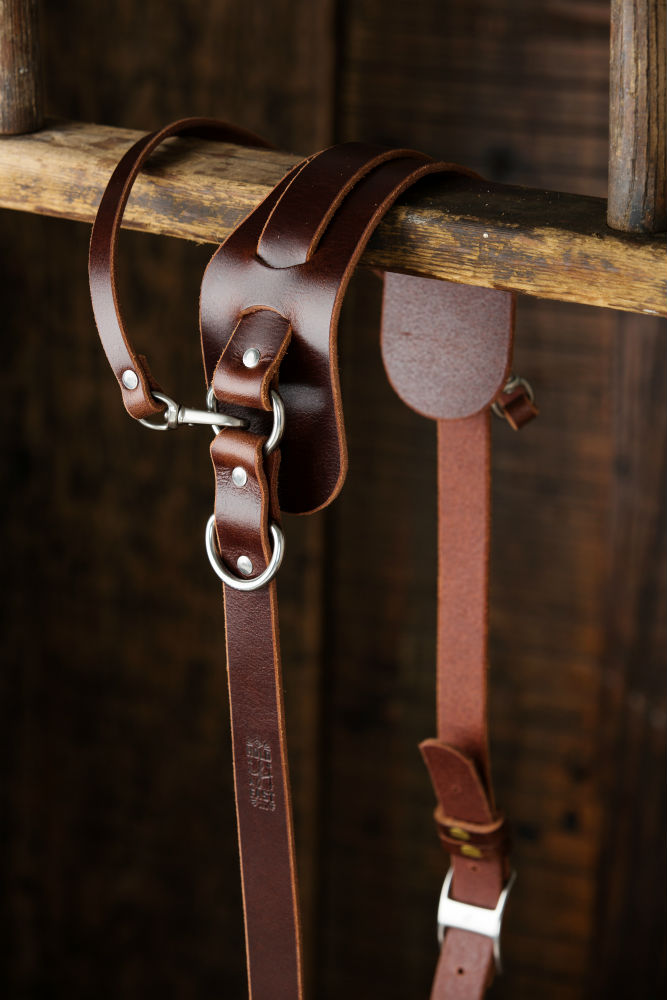
On top of the comfort and functionality aspects, the MoneyMaker Solo is simply a gorgeous strap.
Made of a single piece of full-grain leather, this thing looks like a million bucks. The full-grain has a beautiful texture to it, and it includes any scars the animal had, which tells an interesting story about where the leather came from.
Holdfast worked with a U.S. tannery to develop these leathers specifically for photography, so they're also highly durable. Speaking of durable, the stainless steel hardware (which was designed in-house by Holdfast founder Matt Swaggart) won't rust or fail, even after years of use.
You can even add lens pouches or a cell phone pouch (shown above) to the strap to extend its functionality!
Learn more about the Holdfast MoneyMaker Solo
If you're keen to save money without sacrificing quality or functionality, the Peak Design Slide is a great option.
This was my go-to camera strap before the MoneyMaker Solo came along, and I can personally attest to its functionality and comfort for landscape photography.
It can be worn as a shoulder strap, a neck strap, or a sling, and the non-slip underside helps keep the strap in place on your shoulder.
It's well-constructed, too, with a super-wide strap that's great for distributing the weight of your gear over a larger area.
With tons of adjustments, lots of padding, and good looks, this is a great alternative to the MoneyMaker Solo.
Learn more about the Peak Design Slide
Best Variable ND Filter for Landscape Photography: Kenko NDX
While I typically use square ND filters for my landscape work, having a variable ND filter in my kit allows me to work a little leaner and meaner when time is of the essence.
I've tested a ton of variable ND filters over the years, and honestly, most of them have been crap.
But my Kenko NDX variable ND filter has been a rock star, for sure.
This little guy screws onto the end of my lens and provides the equivalent brightness range of ND 2.5 to ND 1000.
That means that rather than carrying my whole set of square ND filters around, I can use this single filter to work in a number of different situations.
The DMC coating significantly reduces lens flare and ghosting, and the black rimmed glass helps prevent reflections, too.
Made with top-quality Japanese glass, I've found these filters to be strong, durable, and dependable.
Learn more about the Kenko NDX Variable ND Filter
Best Camera Rain Cover for Landscape Photography: Peak Design Shell
Do you have insurance for your car? For your home? For your photography business?
Surely you do...
So why not protect your gear with "insurance" that keeps it safe and dry when the weather gets nasty?
I don't spend a ton of time in rainy or snowy environments (I live in Southern California, after all), but when I take trips to locations where weather is a concern, I always have my Peak Design Shell with me.

This thing sheds water and snow, and also protects your camera from dust and abrasion. That's thanks to a form-fitting design that uses stretchy, waterproof fabric that gets the job done without adding bulk to your camera.
With sizes for all types of cameras from rangefinders to big DSLRs, this shell is a must-have if there's even a chance of being caught out in the rain!
Learn more about the Peak Design Shell
Best Apps for Landscape Photography
These days, it's not just about the physical gear you have in your bag that helps you capture the best landscape photos.
There are thousands of apps you can use that improve your ability to plan your photo outings, find the ideal spots, and time your shots to coincide with sunrise, sunset, or the tides.
There's apps that map out the sky for you, help you find dark skies for astrophotography, and help you calculate times for long exposures as well.
Of course, there's a plethora of editing apps that you can use to fine-tune your images before you share them on social media.
I've outlined my favorite landscape photography apps so you can find the best ones quickly and not have to mess about with testing other apps that may or may not work all that well.
Granted, you might already have your favorites that work well for you, and that's perfectly fine. Ultimately, whether it's apps or physical gear, you have to do you and use what works best in your world.
But if you're in the market for an upgrade or just need to switch things up, give these field-tested recommendations a try!
Originally posted on PhotographyTalk.com











